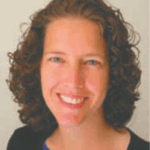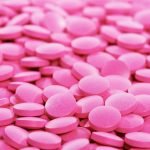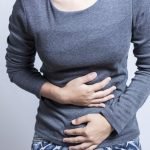Update on Endometriosis: The Need for a Comprehensive Approach
Amy Day, ND
On October 7-8, 2005 a group of more than 700 practitioners, patients and endo activists converged in Milwaukee, WI to share and learn all the latest about endometriosis (endo) at the Endometriosis Association’s 25th anniversary conference. This is a common condition affecting approximately 10% of women, though it often goes undiagnosed. Too few practitioners have a thorough understanding of the disease, its presentations, related conditions, and appropriate treatment strategies. This was an exciting gathering of people dedicated to improving the care of women with endometriosis around the globe.
Paradigm Shift
It was evident during the lectures that an important paradigm shift is happening in the understanding of endo. Along with modern advances in drug therapy and surgical techniques, the new trend is toward a more comprehensive view of the disease. Endo has long been thought of as a reproductive system disorder characterized by misplaced endometrial tissue and pelvic pain. These implants were mainly believed to originate from the uterus via retrograde menstruation through the fallopian tubes. Women with endo were treated with drugs and/or surgery. Drug therapy was either analgesic or hormonal, inducing a state of “pseudo-pregnancy” to prevent menses from occurring. Surgery was at first done by laparotomy (wide abdominal incision) and often left many of the hard to see implants behind. Too frequently these treatments were unsuccessful or the side effects unbearable. Women with endo need better answers and more comprehensive care.
In addition to the lesions in the pelvis, several other factors of the disease are now being recognized, such as disrupted hormone levels, altered immune function and environmental toxicity. The endo lesions are now known to express different levels of hormone receptors and function differently than normal endometrium. Women with endo tend to have high levels of estrogens and androgens and low levels of progesterone. Local immune factors in the pelvis are altered with an increase in inflammatory cytokines and prostaglandins, as well as an overall decrease in macrophages and NK cell activity. Endometriosis has been induced experimentally with exposure to dioxin and has been linked with exposure to many toxic chemical pesticides and herbicides.
This multifactorial view broadens the clinical picture of endo. It should certainly be included in a differential for any female patient with pelvic pain, dysmenorrhea, dyspareunia, infertility, menorrhagia, severe fatigue, or bowel or urinary pain.
It is also frequently associated with auto-immune conditions, anxiety or depression, fibromyalgia, chronic fatigue syndrome, poor blood sugar control, gastro-intestinal dysfunction, frequent infections (bacterial, viral and fungal, including Lyme, Epstein-Barr and Candida), and multiple sensitivities to chemicals, foods, hormones or inhalants.
Other News
Sadly, an increasing number of teens are now being diagnosed with endo, though it is unclear whether there is a higher incidence or if these girls are being diagnosed earlier than the previous generation. There are also many women who still have endo-related problems post-hysterectomy and post-menopause. Neither pregnancy nor menopause cures endometriosis.
Genetic research is showing a multi-factorial heredity to endometriosis. A woman’s risk is increased 5% to 10% if she has a first-degree relative with the disease, though the exact genetic or environmental components are still being worked out.
Epidemiological evidence points to a 5% to 10% occurrence of certain types of ovarian cancer in women with endometrial cysts on their ovaries. The possibility of increased risk of other cancers is less clear.
There was news about a company who is working on a new way to diagnose endo with a blood test. Hopefully that will be available soon. The “gold standard” for diagnosis at this time is surgery with biopsy and histological confirmation. Surgery to treat endo requires a high level of training and skill. Specialized surgeons are able to diagnose and properly treat during one laparoscopic surgery.
Pharmaceutical companies are developing new drugs in an attempt to address endo more directly than just inducing pseudo-pregnancy or pseudo-menopause. Aromatase inhibitors which decrease the conversion of androgens to estrogen; progesterone receptor modifiers which are aimed at the high levels of progesterone receptors found on implants; and angiogenesis inhibitors which block the development of new blood vessels to feed the lesions are all promising treatments. Although long-term management of endo can be achieved through natural treatments, many patients do best with a combination of surgery, drugs and natural treatments to help them through the most difficult times.
The Role of the Naturopathic Doctor
Naturopathic treatment can help endo patients on many levels.
- endocrine testing and support for ovarian, adrenal and thyroid hormones
- immune system support, identifying allergens and treating underlying infections
- environmental toxin testing and detoxification
- pain reduction with anti-inflammatories, hydrotherapy, exercise
- nutritional guidelines to decrease inflammation and balance blood sugars
- lifestyle management, stress reduction, adequate sleep
- emotional support by validating symptoms and listening, support groups
One of the most important services that NDs can provide is to be a partner in the care of their patients and help build a treatment team of practitioners who are specialists in endometriosis and/or infertility. If a patient chooses to have surgery, it is critical to find a highly qualified laparoscopic surgeon who knows how to identify hidden endometriosis and will excise implants completely. Many general GYNs perform surgery by burning the surface of the lesions with heat or laser, leaving patients with incomplete treatment of the difficult implants. MDs familiar with the latest pharmaceutical approaches will also be able to support efforts of treating underlying causes rather than suppressing symptoms.
Acupuncture and TCM herbs can be an important component of care for many women. Pelvic congestion, pain and adhesions can be helped by physical therapy, yoga, massage, chiropractic, visceral manipulation as well as many other movement and hands-on therapies. Meditation, counseling and support groups can provide much needed help for mental health and coping with endo and its related problems. The Endometriosis Association (www.endometriosisassn.org) is an international organization dedicated to education, support and research. They can provide lists of endo practitioners and local support groups in different areas around the world.
Summary
Although endo remains a chronic disease without a simple cure, naturopathic treatment offers women the ability to manage the disease and improve their quality of life. The greater endometriosis community recognizes that conventional treatment does not offer complete answers. NDs are the perfect ally for women with endo who seek comprehensive treatment options beyond drugs and surgery.
 Amy Day, ND received her Doctorate of Naturopathic Medicine from the National College of Naturopathic Medicine (NCNM) in Portland, OR, and was among the first NDs licensed in California. Dr. Day is in private practice at SOMA Acupuncture and Natural Health Clinic, and is a western medicine faculty member at the American College of Traditional Chinese Medicine in San Francisco. Her practice emphasizes women’s health, including PAP smears, bioidentical hormones and natural treatments for conditions such as PMS, PCOS, endometriosis, infertility and menopause. She uses an integrated approach combining diet, exercise, lifestyle counseling, stress management, nutritional supplements, and botanical medicine. In addition to medical office visits, she offers integrated bodywork for stress relief and injuries. Her practice is in Potrero Hill in San Francisco
Amy Day, ND received her Doctorate of Naturopathic Medicine from the National College of Naturopathic Medicine (NCNM) in Portland, OR, and was among the first NDs licensed in California. Dr. Day is in private practice at SOMA Acupuncture and Natural Health Clinic, and is a western medicine faculty member at the American College of Traditional Chinese Medicine in San Francisco. Her practice emphasizes women’s health, including PAP smears, bioidentical hormones and natural treatments for conditions such as PMS, PCOS, endometriosis, infertility and menopause. She uses an integrated approach combining diet, exercise, lifestyle counseling, stress management, nutritional supplements, and botanical medicine. In addition to medical office visits, she offers integrated bodywork for stress relief and injuries. Her practice is in Potrero Hill in San Francisco










